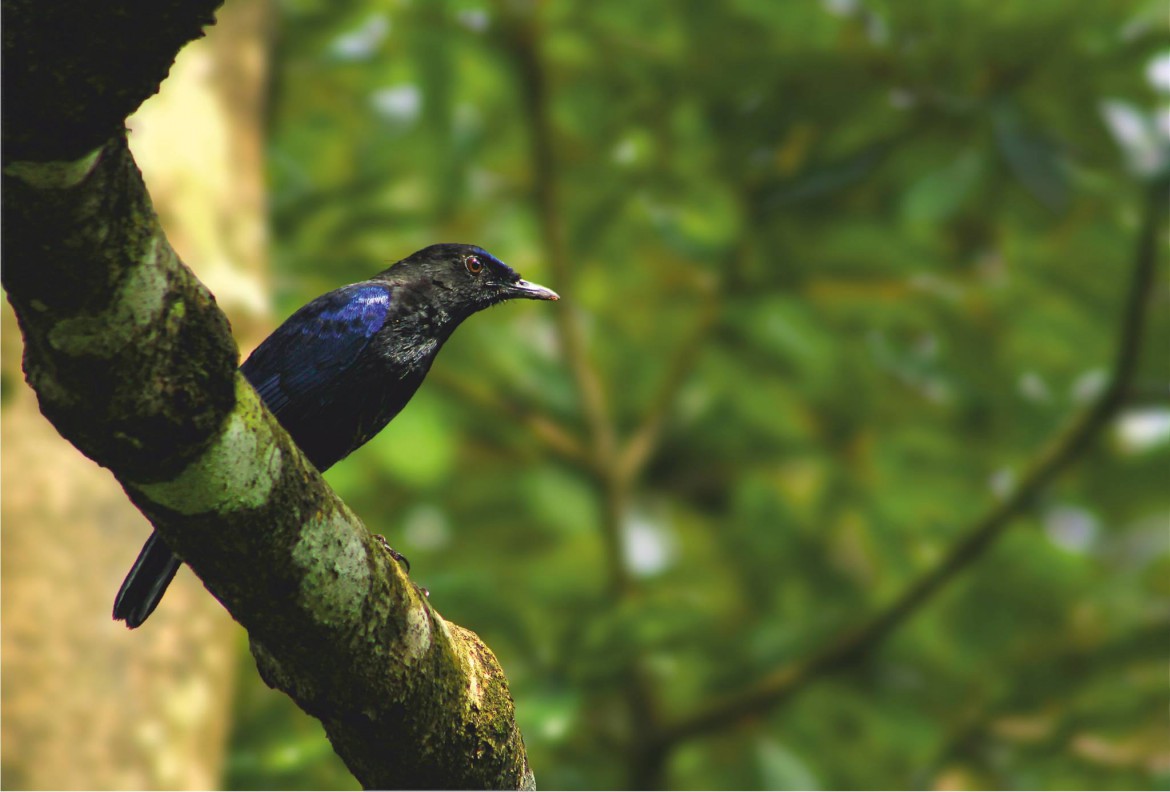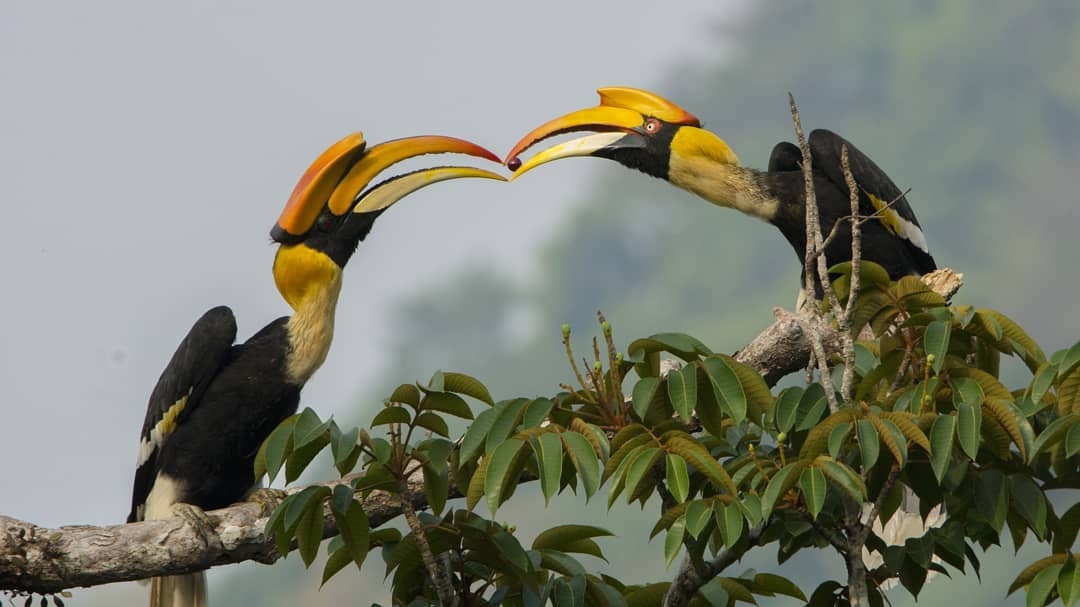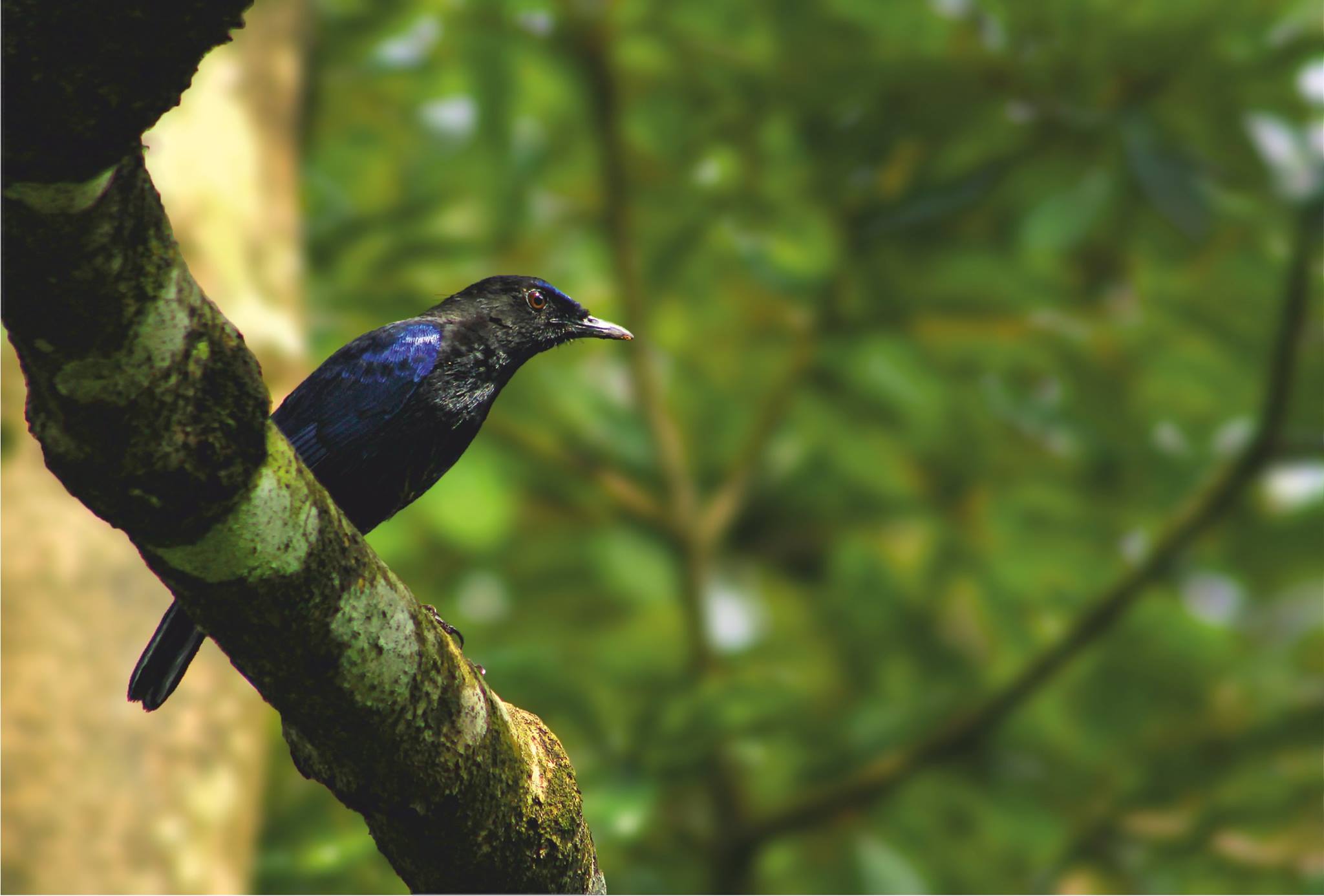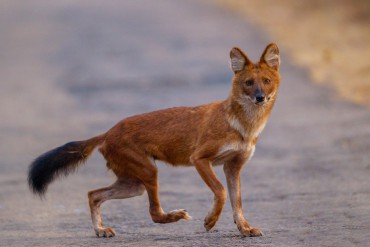Mystical whistles float out of the depths of the dark rainforest, through mercurial mist and morning air. The notes are continuous, almost breathless, yet gracefully slow and pleasing. This is no repetitive tune — it is an entrancing melody of ever-varying notes that rise and fall in an unpredictable series of undulating tones. In this forest — the notes seem to suggest — lives a flautist of the most unbridled creativity.
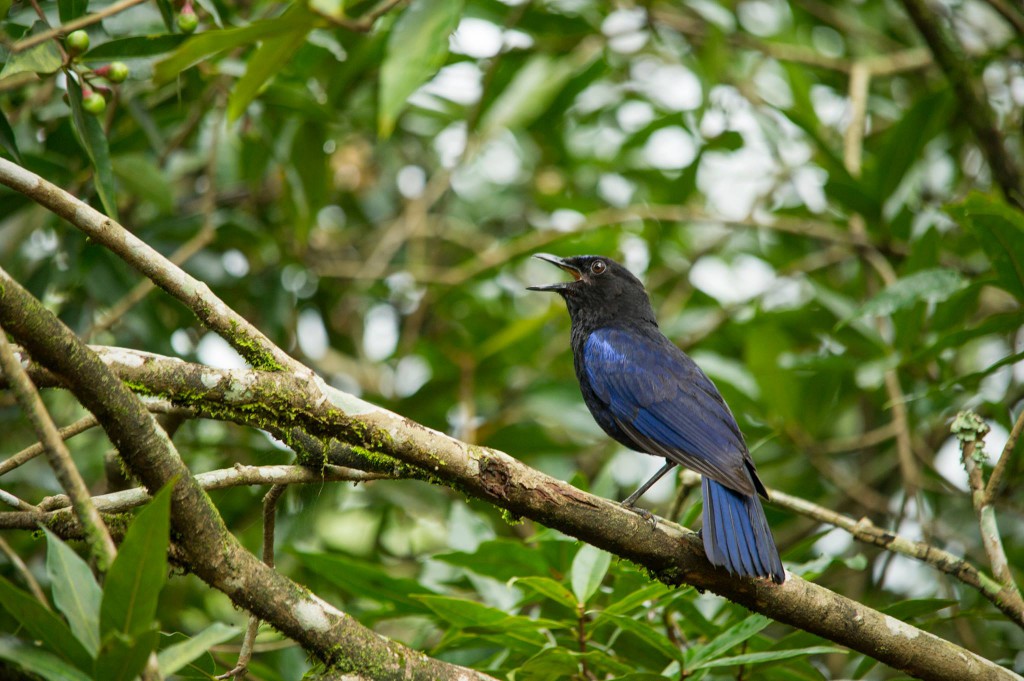
The Shining Ultramarine
The bird producing these enchanting tunes is, at first sight, almost unremarkable in appearance. As the sun climbs and the mist dissipates, it is seen perched on a boulder by the stream; it appears simply black.
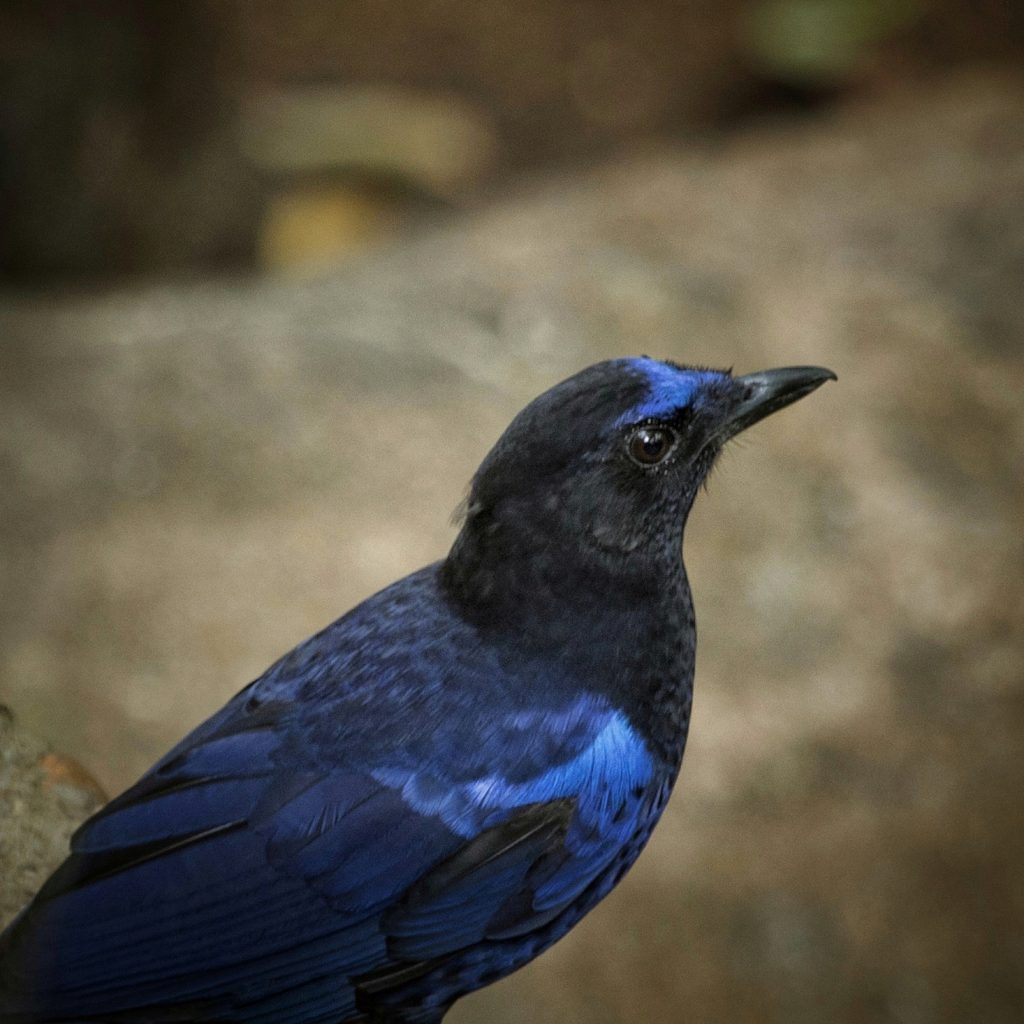
Yet, the plumage has a sleek, glossy finish and the bird, unconcerned by the apparent simplicity, carries a proud, erect bearing, chin up and chest out. It bobs smartly to attention, fanning its tail open and closed, up and down, and surveys the stream with a stern eye like a general surveying his territory. It almost seems, if the bird had heels to click, it would. Its military sprightliness is strangely accentuated when the sunlight catches its black uniform.
Suddenly, the drab black acquires an iridescent sheen with purple and blue, and on the forehead and shoulders glisten — like epaulets of high rank —spangled badges of ultraviolet finery.
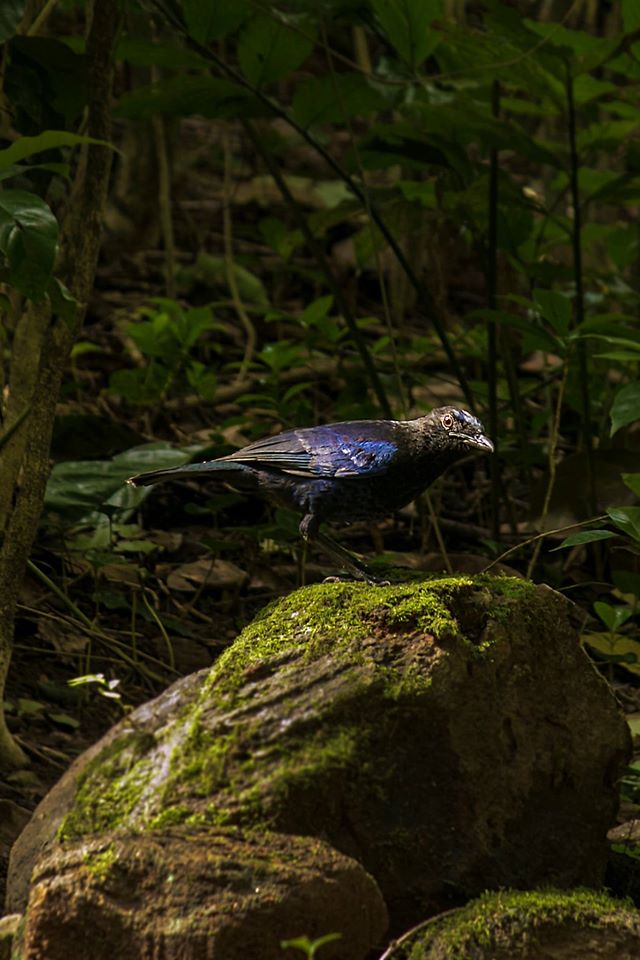
Birdwatchers call this bird the Malabar Whistling Thrush, a species found in the Western Ghats and associated hill ranges of India. The name, adequate though it is, does little to describe the landscape of hill forests and streams that is its home. Here be a bird — the name seems to say — a thrush it is by appearance and ancestry; it whistles, for sure, as one can attest; and by christening it Malabar a certain perfunctory attention is paid to its provenance. A more casual tag is sometimes affixed, stemming from an interpretation of its carefree and rambling whistles; the “whistling schoolboy”. And yet, when one awakens on monsoon mornings to the symphony of its whistles, the name seems inadequate, and one wishes one had a greater tribute to pay.
Culvert-in-charge
The whistling thrush has a fondness for flowing waters on the hill slopes. There it hunts aquatic snails, frogs, and crabs, staying open to what opportunity may offer, including worms and bird nestlings. Holding the prey firmly in its bill, the thrush batters it lifeless on a rock before consuming it, concluding their predatory bout with a piercing whistle, perhaps, or a dipping flight down the stream in search of more. With the approach of the monsoon, as the streams are recharged with waters, its song acquires a new zest and the bird begins to breed, even as other bird species in the rainforest are already done with their nesting and are out with their young.
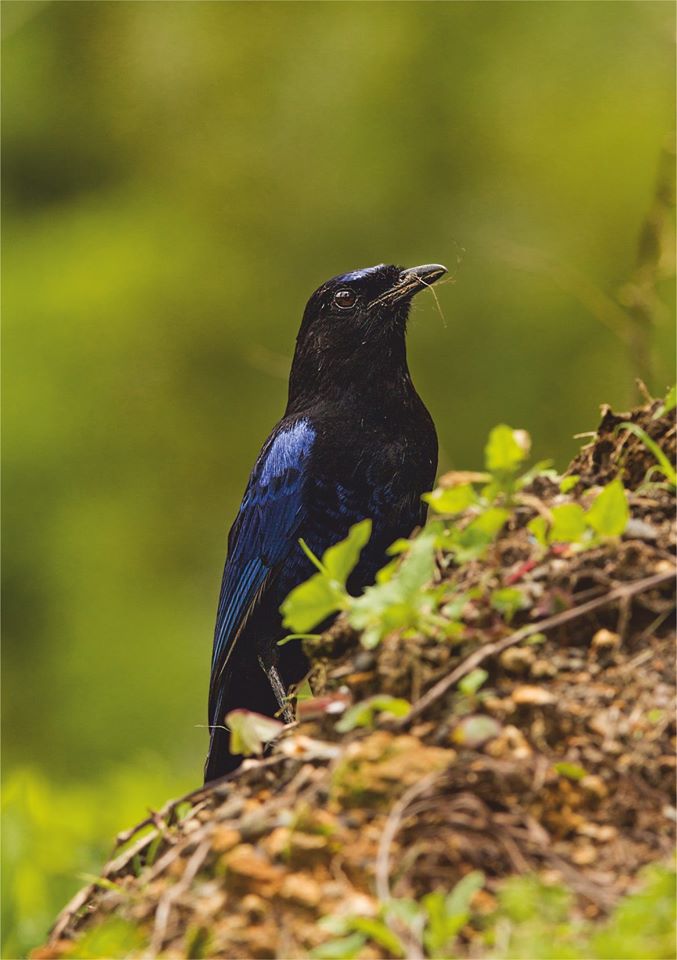
It builds a nest in little nooks and crevices along streams, among rocks and cut banks. When forests give way to plantations and rocks to buildings and bridges, the thrush, fortunately, is forgiving and may adopt a space under the eaves or a hole in a wall to nest.
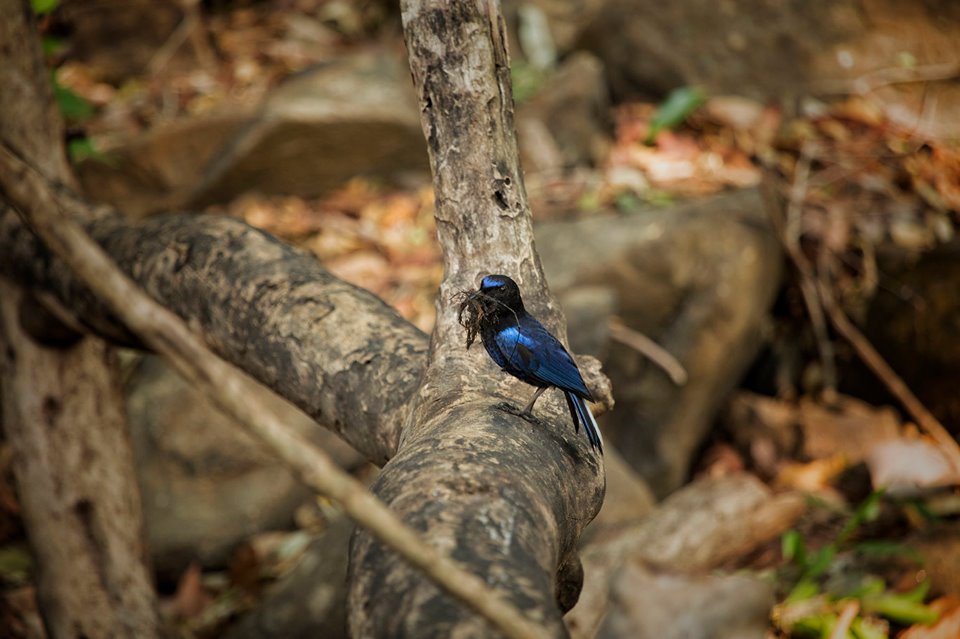
Yet, the streams and rivers are never far. As long as the streams are alive, even with a vestige of flowing water, the thrush may survive in the ever-changing hillscapes. One may see it in coffee, cardamom, and tea plantations, swamps, and rocky, wet slopes, and hill towns. Along hill roads, it is often seen perched on culverts, a habit shared with its Himalayan cousin, the Blue Whistling Thrush. Seeing culvert after culvert with its resident bird, a friend in government service coined an official designation: “culvert-in-charge”.
Quenching Our Thirst
Today, the whistling thrush persists in these hills. Amidst a litany of ugliness — pesticides and poisons, check-dams and catapults, pebble pillage and boulder burglary, sand mining and dynamite fishing, drainage and diversion — the whistling thrush survives and fills the air with songs of rare beauty.
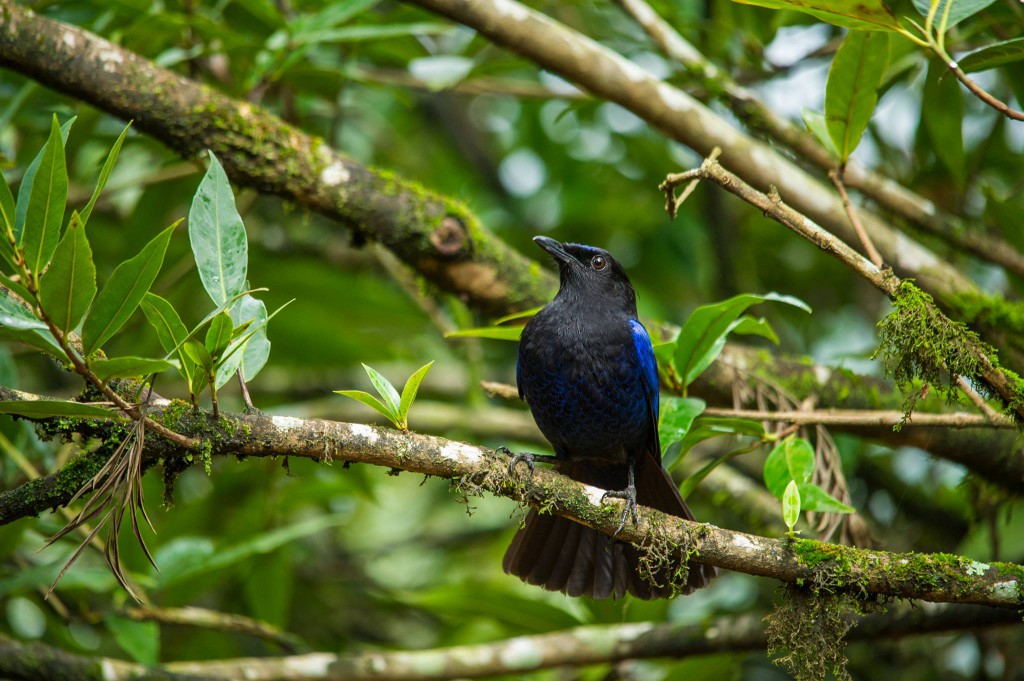
One cannot imagine these hills without the whistling thrush. The day its song fades from these hills would be a day as of unbearable pain, of unbridgeable loss.
And when the monsoon arrives to revive the parched hills, with its thunder and clouds and lashing winds and pelting rain, there will be a strange emptiness. For in the hills of the Western Ghats, it is not just the rain, but the voice of the whistling thrush that sings the music of the monsoon.
This is an edited version of an article that appeared in The Hindu, Sunday Magazine.
About the series – Icons of Anamalais:
A treasure house of bio-diversity, the Anamalai’s region of the Western Ghats is home to a spectacular array of wild species, some rare and endemic, that are found nowhere else on Earth. “Elephants Hills” as it is literally translated, the region is one of the most picturesque landscapes in the country that hosts a broad variety of ecosystems ranging from tropical wet evergreen forests to sholas and montane grasslands to dry, scrub jungles.
Home to the large mammals like the Asiatic Wild Elephants, Indian Gaur, the endangered species like the Wild Dogs, Nilgiri Tahr and Lion Tailed macaques, Anamalai’s is also first to be home to all 16 endemic bird species of Western Ghats.
This series of articles by The Pollachi Papyrus, celebrates the iconic birds and mammals of the Anamalai’s –a unique ecological tract and a global bio-diversity hotspot that needs protection and conservation.

